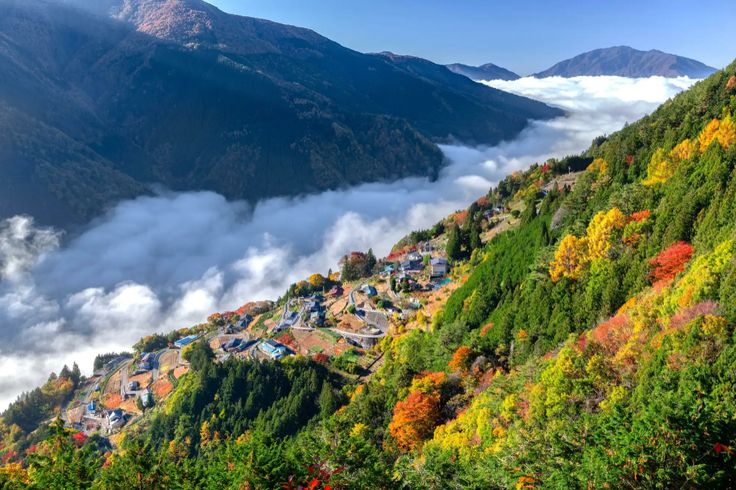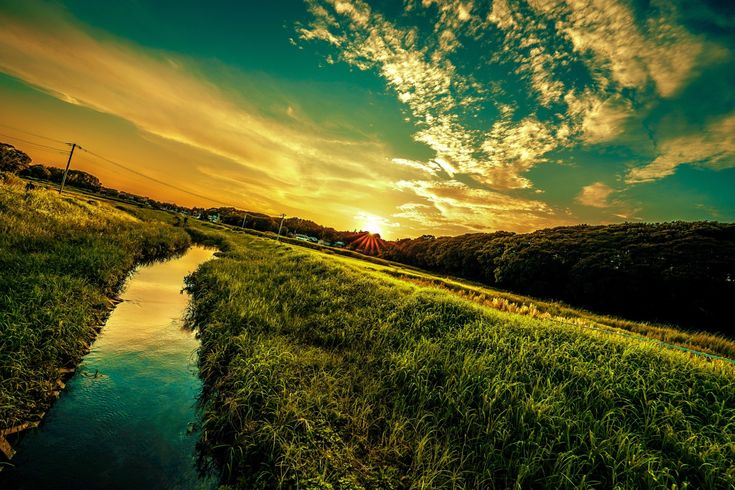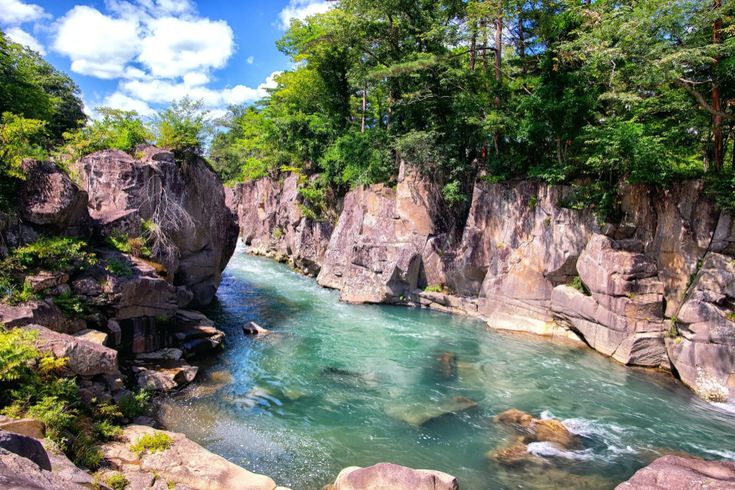The road into the Iya Valley was less a road and more a dare. It twisted and coiled like a startled serpent, clinging precariously to the sides of mountains that plunged into impossibly deep gorges. Akari, a botanist seeking solace and the rare alpine flora of Shikoku, gripped the steering wheel, her knuckles white. Each turn revealed another vista of breathtaking, untamed beauty – emerald slopes so steep they seemed to defy gravity, rivers carving through ancient rock, and a sky that felt vast and achingly pure. This was Tokushima Prefecture’s hidden heart, a place where nature hadn’t just been preserved, but reigned supreme.

Her destination was one of the small, scattered villages that dotted the Iya Valley, hamlets that seemed to sprout organically from the landscape rather than impose upon it. These were places where time moved at the rhythm of the wind sighing through cedar trees and the rush of water over stone. The Iya Valley was legendary for its isolation, for its “untouched nature,” and Akari was beginning to understand why. Reaching it was an act of pilgrimage in itself.
The first truly iconic sight, and the one that made her heart leap into her throat, was a kazurabashi – one of the valley’s famed vine bridges. Suspended high above a churning turquoise river, its woven mountain vines looked impossibly delicate, a fragile thread spun by giants. She parked her car and approached it with a mixture of awe and trepidation. The wooden slats, spaced just far enough apart to offer dizzying glimpses of the gorge below, creaked under her weight. With each step, the bridge swayed gently, a living thing responding to her presence. It was a primal experience, connecting her viscerally to the ingenuity and courage of the people who had first conceived of such a crossing. These bridges weren’t just feats of engineering; they were symbols of resilience, of humanity’s ability to adapt and coexist with a formidable landscape.
Her lodgings were in a traditional farmhouse in the village of Ochiai, its wooden structure weathered to a silvery grey, nestled on a steep incline that offered panoramic views. The air was crisp, carrying the scent of damp earth, pine, and woodsmoke from a nearby hearth. Her host, an elderly woman named Mrs. Sato, moved with a quiet grace, her face a roadmap of seasons lived in this remote place.
“The valley keeps its own counsel,” Mrs. Sato said one evening, as they sat by the irori, the sunken hearth casting dancing shadows. “It demands respect. We don’t conquer it; we learn to live alongside it.”
Akari spent her days exploring. She hiked trails that were little more than goat paths, her botanist’s eye delighting in the unique flora – rare ferns clinging to mossy rocks, vibrant mountain azaleas, and ancient trees whose gnarled branches seemed to tell stories of centuries past. The “wild beauty” was everywhere, not manicured or tamed, but raw and powerful. She’d often find herself utterly alone, the only sounds the chorus of cicadas, the rush of a hidden waterfall, or the distant call of a hawk circling overhead.

She visited the other kazurabashi in the valley, each one unique, each crossing an exhilarating communion with the heights and depths of Iya. She learned that the vines were replaced every few years, a communal effort that underscored the villagers’ deep connection to their environment and their traditions.
One afternoon, she met a group of local men meticulously repairing a section of stone terracing that supported a small patch of buckwheat. Their movements were economical, born of long practice. They worked in a quiet rhythm, their conversation sparse but friendly. They shared their water and some pickled vegetables with her, their hospitality as unpretentious and genuine as the landscape itself. This was the “untouched nature” extending to human interaction – simple, direct, and deeply rooted.
The Iya Valley was also a place of stories, of legends. Mrs. Sato told her tales of the Heike clan, who, defeated in battle centuries ago, supposedly fled to these remote mountains, their descendants forming the first settlements. The isolation that once protected them now contributed to the valley’s unique, preserved character. Akari felt she could almost sense those ancient echoes in the rustling leaves and the mists that often wreathed the mountaintops.
The absence of overt modernity was striking. While not entirely devoid of it, life here felt stripped back to its essentials. The focus was on the land, the seasons, and the community. She found a profound peace in this simplicity, a clarity that had eluded her in the bustling research labs and crowded cities.
One evening, as a spectacular sunset painted the gorge in fiery hues of orange and purple, Akari sat on a bluff overlooking the valley. Below, the lights of a few scattered houses twinkled like fallen stars. The air was cool, and the sound of the Iya River was a constant, soothing murmur. She thought about the vine bridges, those tenuous yet strong connections across the deep chasms. They were a metaphor for life in the Iya Valley itself – a life lived in balance with formidable forces, a life of ingenuity, resilience, and a deep, abiding respect for the wild beauty that surrounded them.
Akari had come to Iya seeking rare plants, but she found something far more profound. She found a place where humanity lived not as a master of nature, but as a humble, integrated part of it. The remote villages, the breathtaking gorges, and the iconic vine bridges were not just picturesque scenery; they were testament to a way of life that was increasingly rare, a whisper of the wild that resonated deep within her soul. The Iya Valley hadn’t just shown her its untouched nature; it had touched something wild and essential within her own.
Akari’s initial awe of the Iya Valley slowly deepened into a quiet affection. The sheer drama of the landscape – the plunging gorges, the vertiginous vine bridges – became a familiar backdrop to a life that was surprisingly, beautifully ordinary in its rhythms. She began to recognize the specific calls of different birds, the subtle shifts in the scent of the air that heralded a change in weather, the way the mist in the morning would often burn off to reveal a sky of impossible clarity.
Mrs. Sato became a gentle guide, not just to the local flora, but to the valley’s subtle culture. She taught Akari how to prepare Iya soba, the local buckwheat noodles, using stone-ground flour from the terraced fields. The process was laborious, from kneading the dough to cutting the noodles by hand, but the resulting taste – nutty, earthy, and deeply satisfying – was a revelation. “Food here tastes of the mountain,” Mrs. Sato would say, her hands moving with practiced ease. “It carries the strength of the soil and the purity of the water.”
Akari also learned about dekomawashi, a local specialty of skewered and grilled potatoes, tofu, and konnyaku, all basted in a sweet miso glaze. Eating it around the irori on a cool evening, the warmth seeping into her bones, felt like part of an ancient ritual.
She discovered that the “untouched nature” of Iya wasn’t entirely devoid of human shaping, but that the shaping was done with such respect and understanding that it blended seamlessly with the wild. The stone-piled terraced fields, clinging to improbable slopes, were a marvel of agricultural engineering, a testament to generations of toil and ingenuity. These weren’t scars on the landscape, but intricate patterns woven into its fabric, allowing life to flourish in challenging conditions. Akari spent hours sketching these terraces, admiring the way they followed the contours of the land, looking almost like natural geological formations.

One day, while hiking a particularly remote trail, she stumbled upon a tiny, almost forgotten shrine nestled amongst towering cedar trees. Its wooden structure was weathered and grey, covered in a thick blanket of moss. There were no grand pronouncements, just a simple stone basin for purification and a few faded paper shide fluttering in the breeze. It felt intensely spiritual, a quiet acknowledgment of the powerful forces that animated the valley. She left a small, perfect wildflower she’d found as an offering, feeling a sense of connection that transcended any formal religion.
The vine bridges continued to fascinate her. She learned from a local man, Mr. Tanaka, who was involved in their maintenance, that the kazura vines (hardy kiwi vines) used for their construction were carefully harvested from the surrounding mountains. The weaving process itself was a specialized skill, passed down through families. “These bridges are our lifeline, Akari-san,” he explained, his hands tracing the pattern of a particularly thick vine. “They connect us not just across the river, but to our ancestors. They remind us that we are part of something larger, something older.” He spoke of the slight fear that always accompanied a crossing, a respect for the height and the power of the river below, which he believed was healthy – a reminder not to take the valley’s gifts for granted.
Akari even witnessed a small, local festival in one of the villages. It wasn’t a grand affair for tourists, but an intimate community gathering with simple food, traditional music played on bamboo flutes and small drums, and dances that seemed to mimic the movements of nature – the swaying of trees, the flow of water. Children with faces painted ran laughing amongst the adults. There was a joyful, unselfconscious quality to it all that was deeply endearing.
Her botanical research flourished. She identified several rare species of fern and orchid unique to Iya’s microclimates, their resilience a mirror of the human inhabitants. But her notebooks began to fill with more than just scientific observations. She sketched the faces of the villagers, the textures of the thatched roofs, the patterns of light and shadow in the deep gorges. She wrote down fragments of conversations, recipes Mrs. Sato shared, the haunting melodies of local folk songs she sometimes heard drifting through the trees.
The Iya Valley was slowly unwrapping its layers for her. Beyond the stunning vistas and the thrilling vine bridges, she found a community deeply intertwined with its environment, a people whose lives were a continuous dialogue with the wild. Their “untouched nature” wasn’t about being primitive; it was about a sophisticated, long-evolved wisdom of co-existence.
As the autumn colors began to blaze across the mountainsides – fiery maples, golden ginkgoes, russet oaks – Akari knew her extended stay was nearing its end. The valley had given her far more than she had bargained for. It had offered her a glimpse into a way of life that was both challenging and profoundly rewarding, a life where the wild wasn’t something to be conquered or tamed, but to be respected, listened to, and woven into the very fabric of existence. The whispers of the wild Iya would continue to echo in her heart, a reminder of the raw beauty and quiet strength she had found in its remote embrace.

